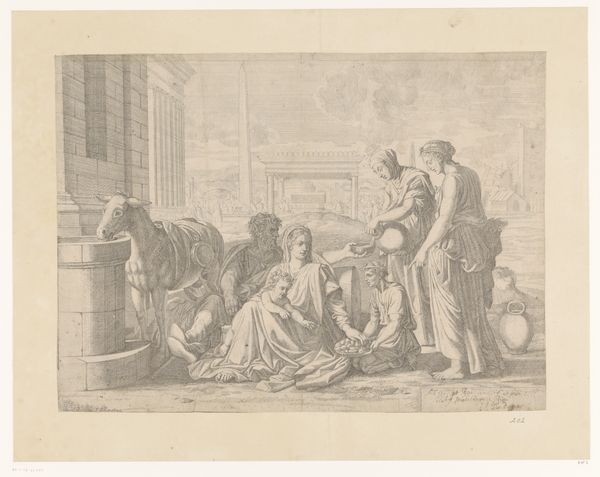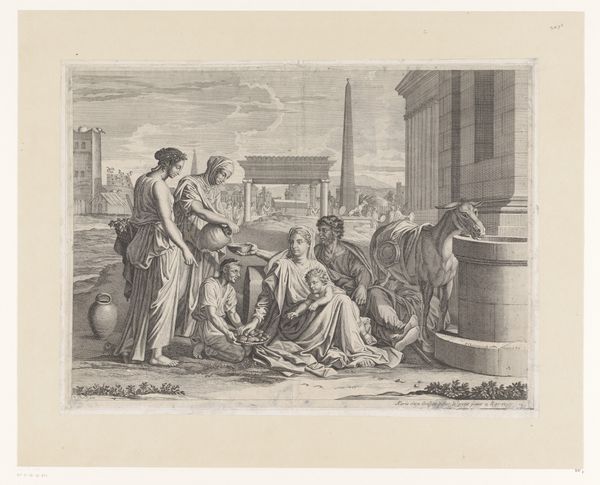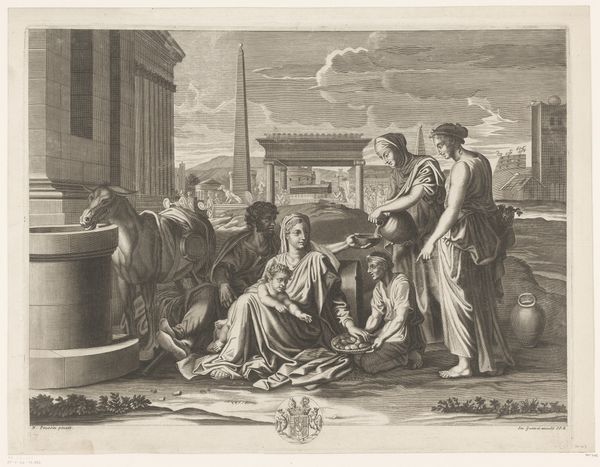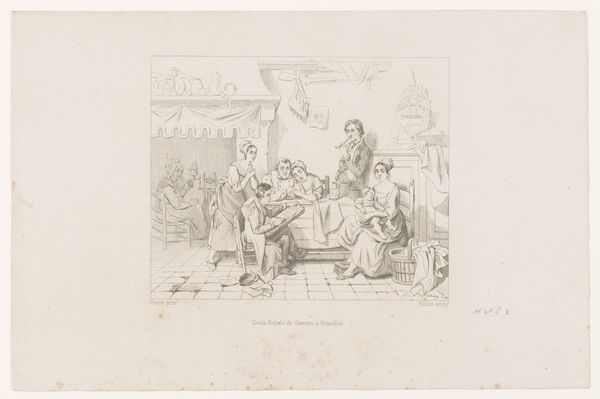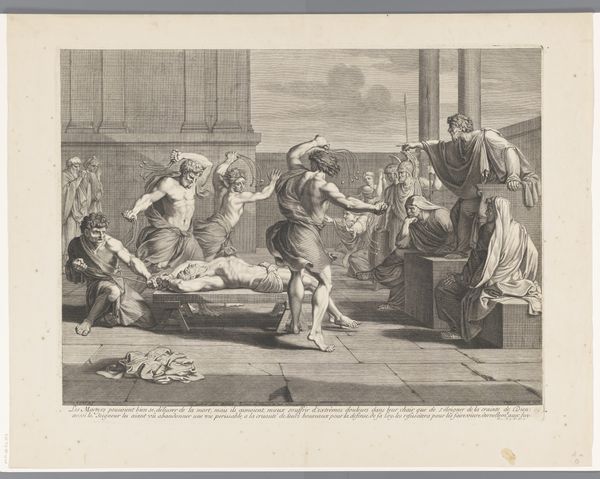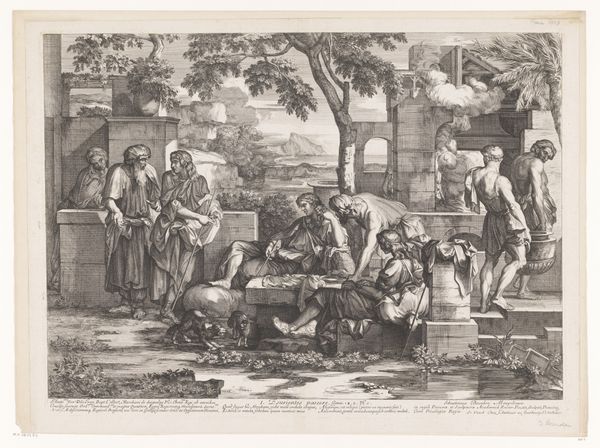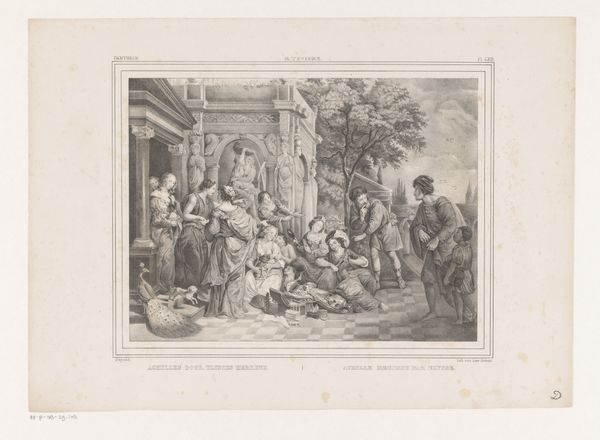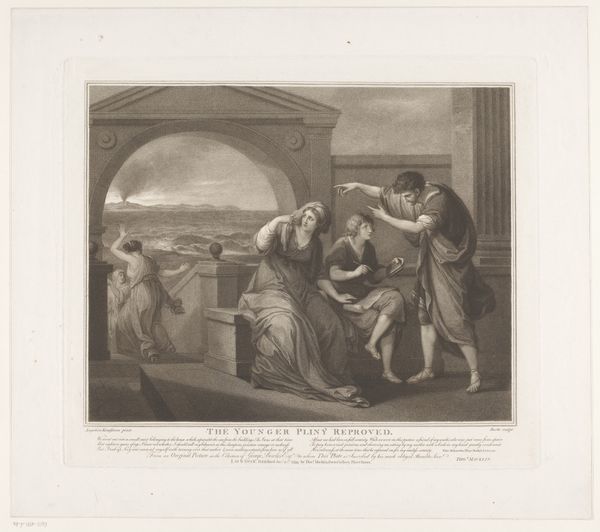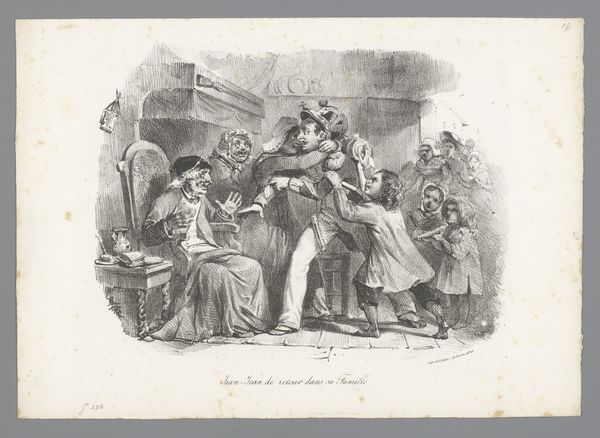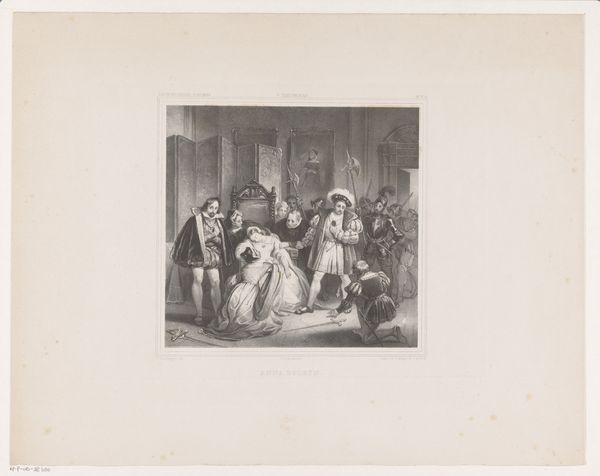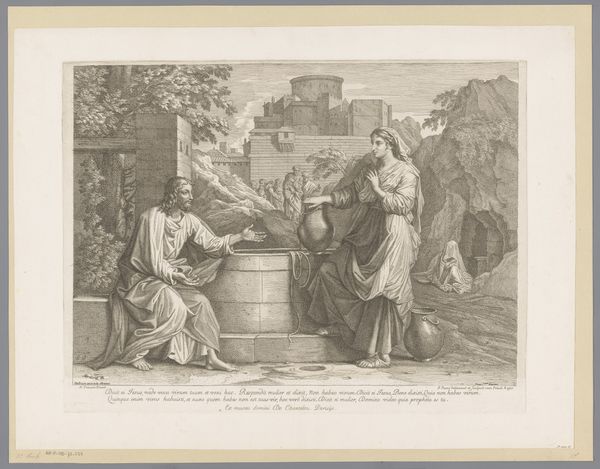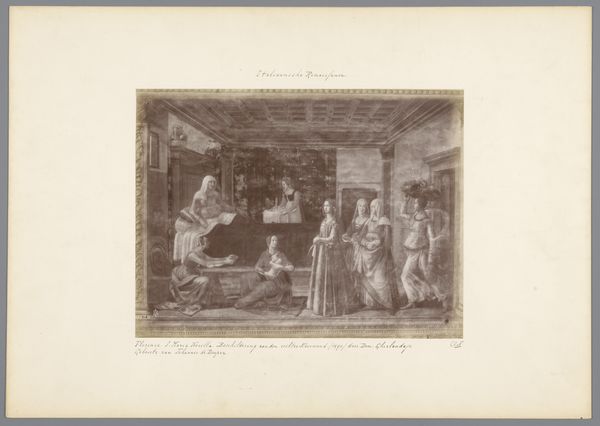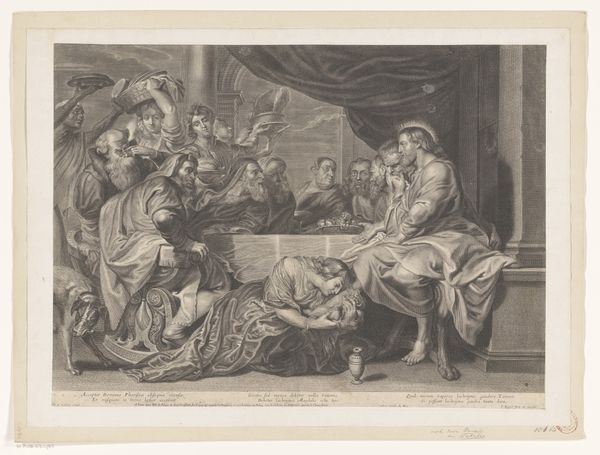
print, engraving
#
portrait
#
baroque
# print
#
old engraving style
#
figuration
#
line
#
history-painting
#
engraving
Dimensions: height 361 mm, width 495 mm
Copyright: Rijks Museum: Open Domain
Curator: Welcome. Here we have "Rest on the Flight into Egypt," an engraving dating from between 1625 and 1679 by Jean Dughet. Editor: My first impression is of quietude and domesticity, strangely juxtaposed with the monumental architecture looming in the background. The scene feels both intimate and somehow, very public. Curator: It's fascinating how Dughet captures that duality. We see the Holy Family taking respite, foregrounded by the looming architecture and distant obelisk of a past empire, rendered in delicate lines. The engraving process itself—the deliberate, repetitive labor—speaks to a kind of artistic devotion mirroring the sacred theme. Editor: Absolutely. And look at the layering – you've got the textures of their clothing, the water being poured, all meticulously etched. But consider the social aspect of these prints. This wasn't a unique art object displayed in some nobleman’s palazzo. Dughet's engravings like these were reproduced and circulated, bringing images of piety, and in many cases, a distinct political message, to a wider audience. Curator: Precisely! Prints democratized imagery and devotion, and it's tempting to imagine prints of "The Holy Family" adorning more modest homes and spaces than, say, a monumental painting of a similar subject. The role of reproductive printmaking and accessibility makes this art relevant within early modern societal structures. It created visual conversations, disseminated ideologies and devotional practice that moved the subject into the homes and minds of a far greater swathe of society. Editor: I’m struck by how these sorts of domestic and Biblical scenes reflected back the values that people held to be universal and what were presented as culturally "correct", and by circulating widely, helped reinforce this ideal, whether attainable or not. Curator: I agree. Examining "Rest on the Flight into Egypt" lets us engage not just with religious iconography and artistic technique, but with the complex dynamics of art, religion, and social life in early modern Europe. Editor: It encourages reflection on the power of images, whether finely etched or crudely printed, to shape belief and perception.
Comments
No comments
Be the first to comment and join the conversation on the ultimate creative platform.
